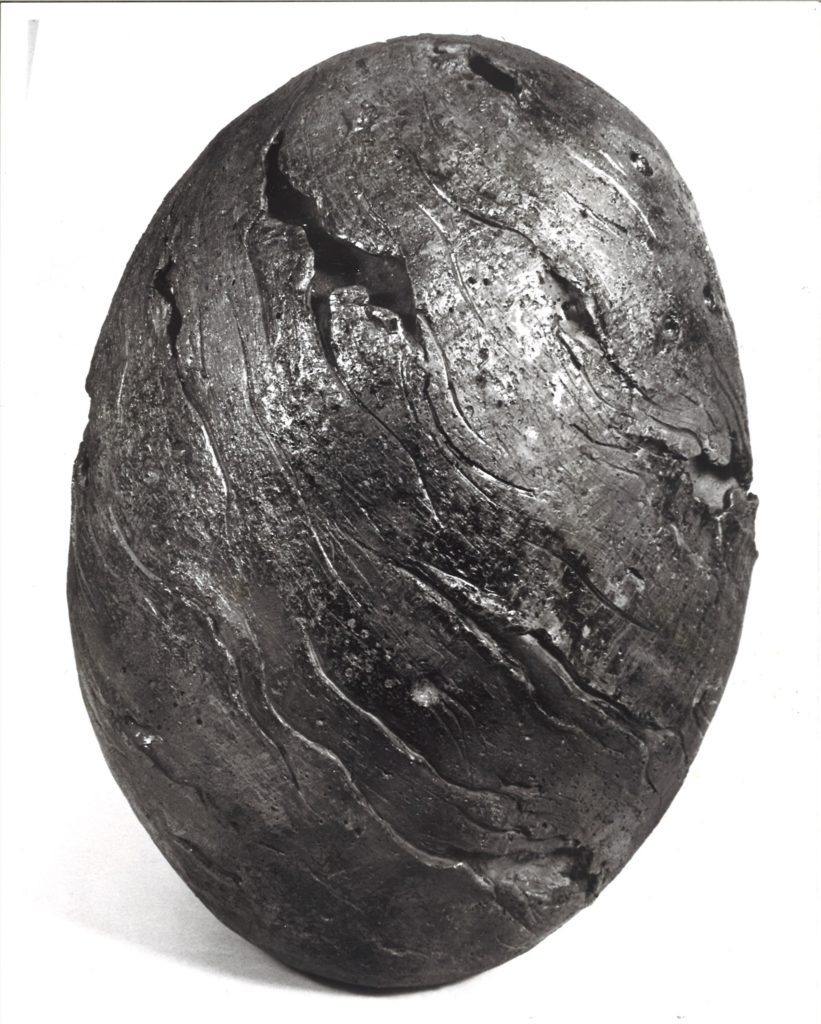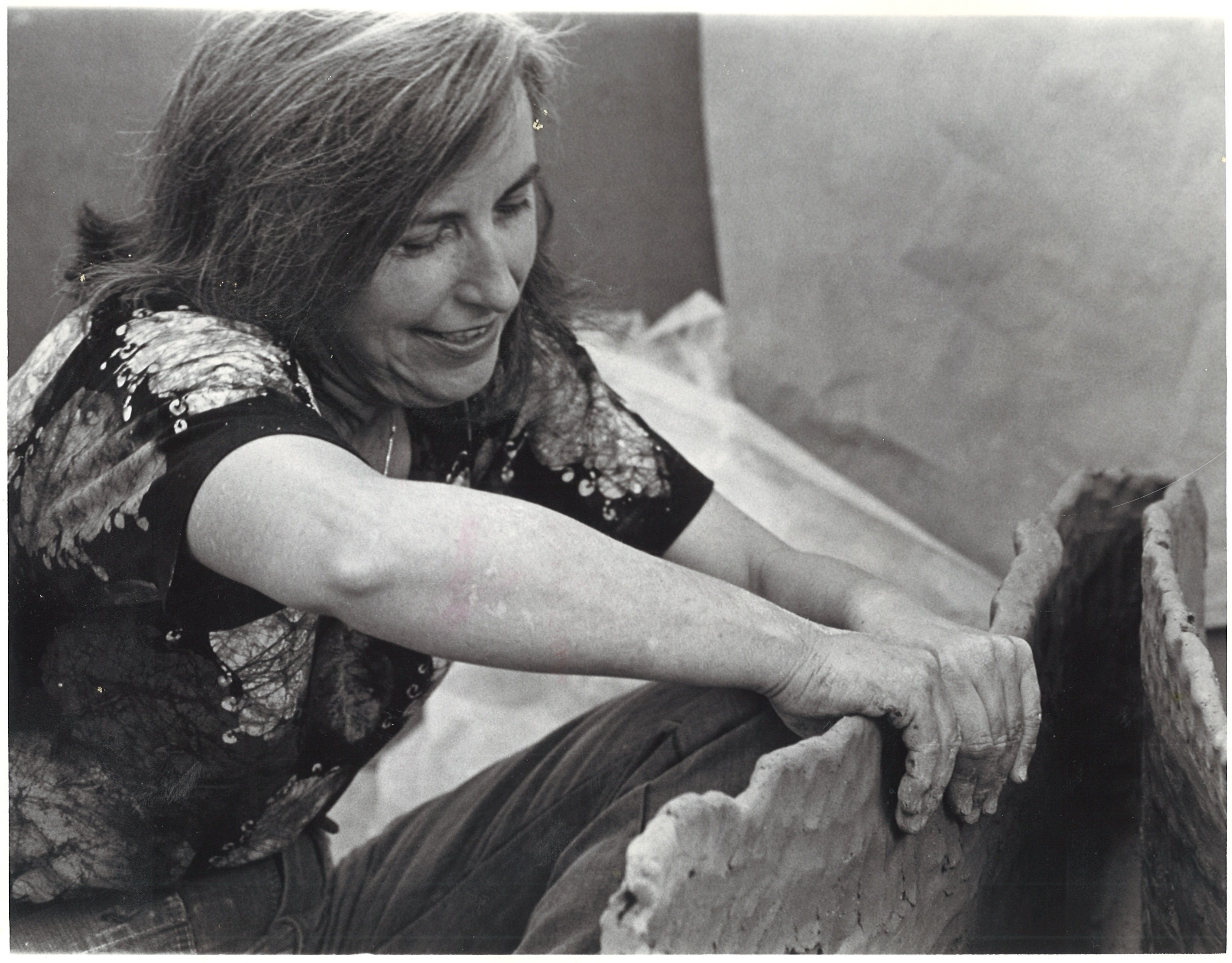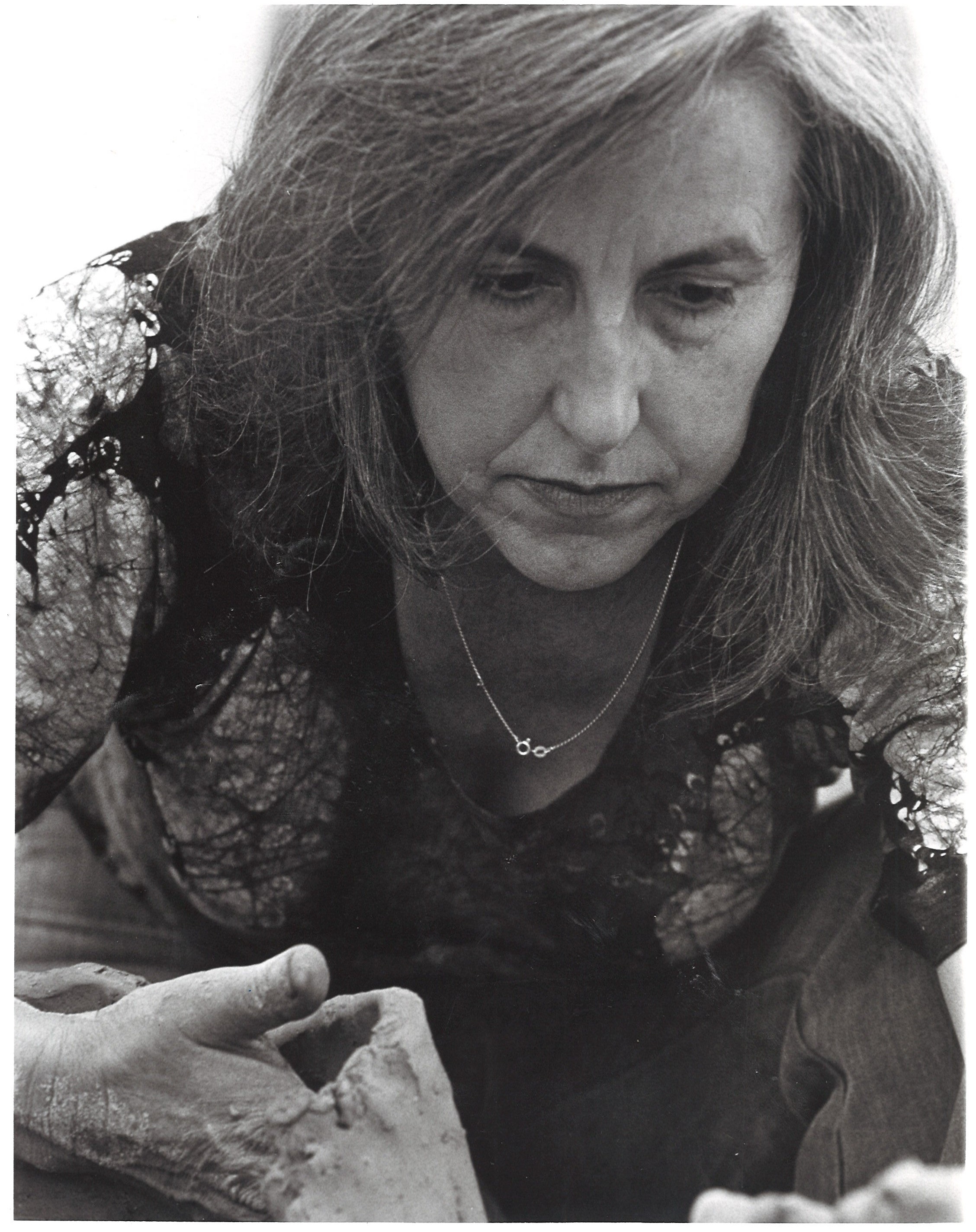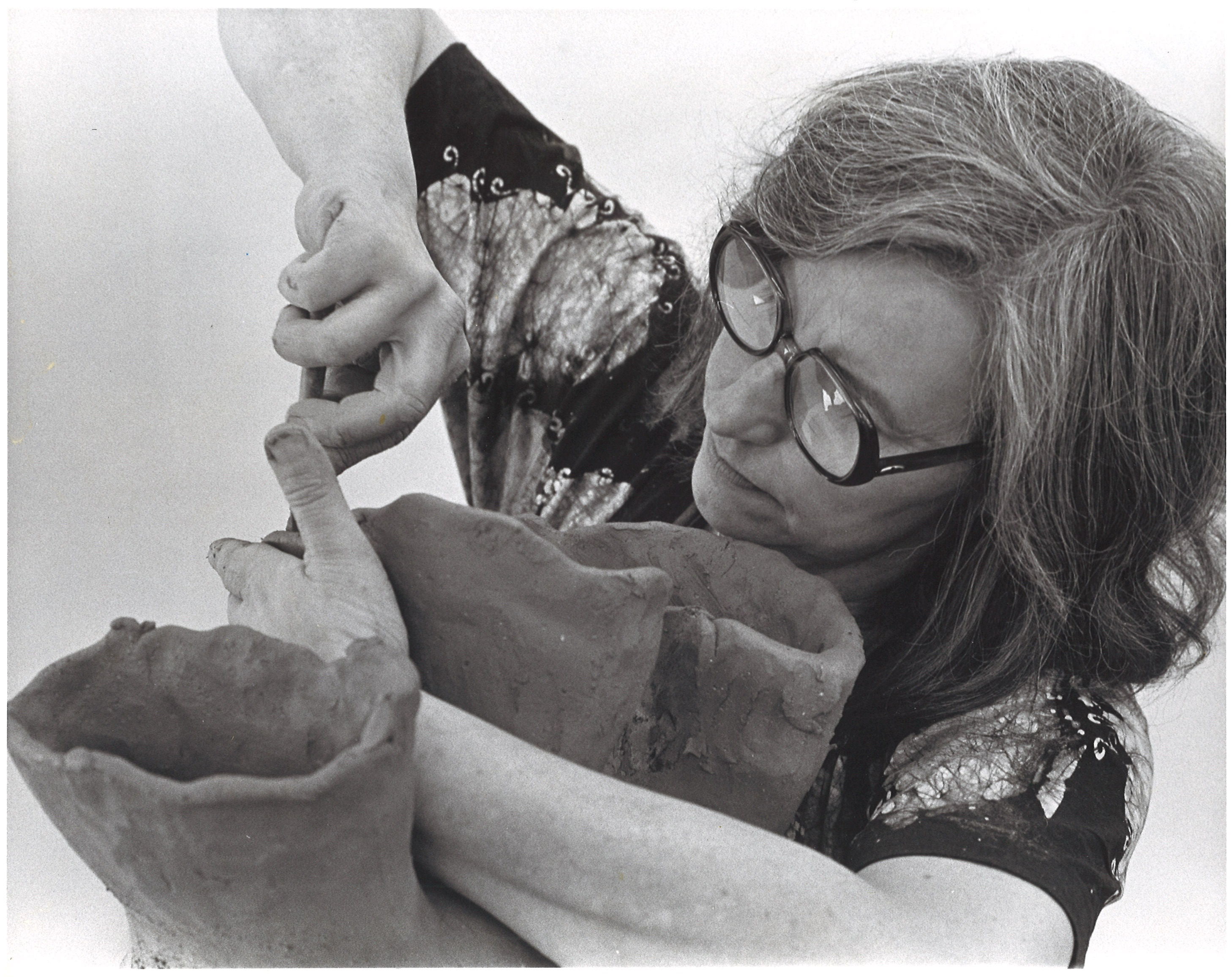Joan Campbell

(1925-1997) born in Geelong, Victoria, Australia and lived and worked in Scarborough, Perth, Western Australia
The Egg, 1973
clay, 28 x 60 inches, 93.39.239
One of Australia’s outstanding ceramic artists, Joan Campbell got her start with pottery later in life when she took a hobby class in her mid-thirties. She soon began to pursue it very seriously, and she built a wood-fire kiln at her home and started experimenting with various raku firing techniques, making her the only known person in Western Australia doing raku at the time. In order to learn more about some of technical aspects of raku, Campbell traveled to the U.S. in 1970 to meet with Paul Soldner, the “father of American raku.” Influenced by Soldner, Campbell was becoming an expert in raku, and even went on a raku workshop tour across Australia with Soldner. Because of her recognition as a leader in raku, in 1972 she was invited to exhibit in an International Academy of Ceramics exhibition at the Victoria and Albert Museum in London, England.
Campbell was an active figure in various crafts and professional organizations in Western Australia: in 1968 she helped to establish the Western Australian branch of the Crafts Association of Australia, and in 1973 she was a founding member of the Crafts Board of the Australia Council, which she served on until 1977. In 1975 she opened a studio at the popular Bathers Beach in Freemantle, Australia.



Images: Campbell works on a large slab construction form to be raku fired
In the spring of 1971, under the auspices of the International Academy of Ceramics, the Tennessee Arts Commission pledged its support for the promotion and establishment of the U.S. International Ceramic Symposiums. The Symposium’s mission to help develop a worldwide network of support for ceramic art was achieved by bringing together top ceramic artists from around the world for a month-long sharing of ideas and creation of innovative ceramics.
Campbell represented Australia at the Second U.S. International Ceramic Symposium, which consisted of twelve artists from seven different countries, and was hosted in the summer of 1975 at the Arrowmont School of Crafts in Gatlinburg, TN. She spent her time at the Symposium making large textured raku sculptures, as well as some more traditional bowl forms. Campbell’s The Egg, a massive egg form that incorporates subtle mica surface decoration, exemplifies what she is most well-known for: constructing large raku works with subtle textural variations.
After the Symposium, Campbell continued to manage her studio, promoting and selling functional wares as well as exhibiting widely. During her career, she mentored over forty aspiring potters that worked in her studio, providing with professional development and the space to create their own work. For her contributions to the arts, in 1977 Campbell was appointed a Member of the Most Excellent Order of the British Empire, and was named one of a Citizen of the Year by the Western Australia government. By the mid-1980s, Campbell shifted her focus to working on large scale public works and installations, using ceramics but also incorporating other materials such as steel, wood, and glass. Her art exists in numerous collections, and can be seen at universities, galleries, and public spaces across Australia.
Campbell passed away in 1997 after a battle with cancer. In her memory, a group of close friends and colleagues installed a bronze sculpture in her honor at her beloved storefront at Bathers Beach.
Written by Aiden Layer, TN Arts Intern

